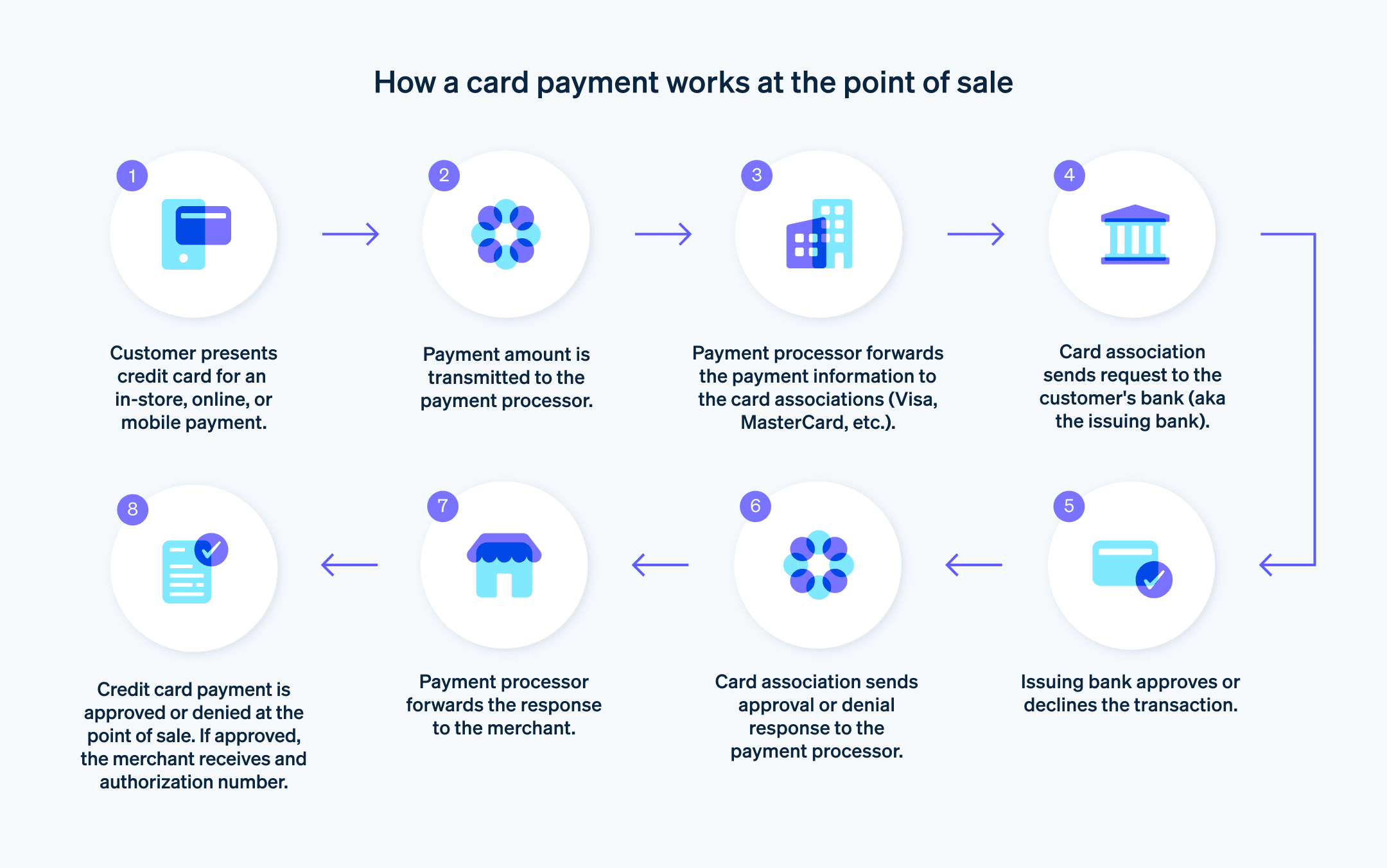如今,银行卡支付是最受欢迎的支付方式。阅读本文,了解不同类型的银行卡支付、银行卡支付的运作方式,以及它们为各种规模的客户和企业带来的好处。
目录
- 什么是银行卡支付?
- 银行卡支付有哪些类型?
- 如何在 POS 上进行银行卡支付?
- 在线银行卡支付如何运作?
- 银行卡支付对企业的好处
- 对于企业而言,银行卡支付会产生多少费用?
- 银行卡支付何时进行扣款?
- 如果银行账户没有足够的资金用于银行卡支付,会发生什么情况?
什么是银行卡支付?
银行卡支付是一种无现金支付方式,顾客可通过销售点终端 (POS) 或在线平台,使用借记卡或信用卡支付所购商品费用。该金额直接从他们的银行账户中扣除,或者如果他们通过信用卡支付,则会在日后扣费。大多数企业接受银行卡支付,因为它们快速便捷,能够加快购买过程。
有哪些类型的银行卡支付?
企业可以通过 POS(销售点)和在线为客户提供许多不同类型的银行卡支付。最受欢迎的选择之一是借记卡。另一种选择是信用卡,它会在稍后的日期(通常是月底)从客户的账户扣款,并且通常还提供额外的好处,如奖励计划。
使用 NFC 技术的非接触式支付也越来越受欢迎。客户只需在读卡器上轻触卡,即可自动扣除金额。使用智能手机或智能手表的移动支付也变得越来越普遍。您可以在此处找到有关支付方式以及如何通过 Stripe 优化收益的更多信息。
如何在 POS 上进行银行卡支付?
要通过 POS 进行银行卡支付,顾客需将银行卡插入读卡器或在读卡器上轻触银行卡。然后,读卡器读取卡上的所有信息,并将其发送到支付处理器。支付处理器处理来自网关的请求,授权交易,并检查客户的银行账户中是否有足够的资金。如果交易获得批准,资金将从客户账户转移到企业账户。该过程通常只需要几秒钟。

在线银行卡支付如何运作?
客户还可以使用信用卡或借记卡在线支付。借记卡需要配备 Maestro 或 Visa 等提供商的联合徽章。企业需要与支付网关集成,该网关在线处理信用卡支付并与银行共享交易信息。
客户需要选择通过信用卡支付的选项,输入他们的信用卡号、到期日期和卡验证码,然后确认付款。自 2021 年推出 3D 安全验证 (3DS) 流程(一种在线银行卡支付的安全标准)以来,客户需要根据所使用银行的要求,通过输入 TAN(交易号码)、密码,或者使用相关应用或指纹验证等方式,作为最后一步来确认支付。经网关快速检查后,支付完成。这一步使得使用信用卡在线支付变得更加安全。
银行卡支付对企业的好处
银行卡支付不仅为客户带来了更多便利,也让处理支付事务变得更为轻松。银行卡支付快速、高效且可靠,能让企业服务更多客户。
银行卡支付也更安全:由于所有交易均通过电子方式处理,消除了收到假钞和现金被盗的风险,而且所有银行卡交易都经过加密,这意味着它们不会被第三方篡改。银行卡支付系统配备了欺诈检测软件,可保护企业免受欺诈交易的侵害。企业还可以增加收入,因为客户在通过银行卡支付时往往会购买更多。
最大的好处之一是,款项会立即从卡中扣除,因此企业能很快收到钱。银行卡支付系统还可以提供有关客户习惯的信息。企业能够更好地了解和分析客户的购买习惯,以确定哪些产品购买频率最高,或者哪个门店最受客户欢迎。这使他们能够调整营销策略或开发新产品以满足客户的需求。
对于企业而言,银行卡支付会产生多少费用?
企业进行银行卡支付的确切成本取决于多种因素,比如支付服务提供商和销售额。
安装通过 POS 接受支付的读卡器,可能会产生一次性的初始费用。这些费用可能因读卡器的型号和制造商而异,但通常在 50 到 500 欧元之间。支付提供商还可能收取月费或年费。不同支付服务提供商的收费可能有所不同,因此进行比较很重要。
交易手续费,即企业在处理客户支付时必须支付的费用,是另一个重要因素。使用支付服务提供商的卡,还需支付占交易金额 1% 到 3% 的费用。根据供应商的不同,会有不同的收费标准和细分。要了解企业必须支付哪些固定费用和可变费用,您应该提前询问您的提供商。
银行卡支付何时扣款?
支付款项的扣除时间取决于卡的类型(如信用卡或借记卡)以及企业的支付系统。一般来说,对于转账(借记)卡,款项扣除时间短则几分钟,最迟不超过下一个工作日;而通过信用卡支付,款项扣除时间则在一个工作日到几天不等。
还有其他一些因素也会影响从卡中扣除支付款项所需的时间。例如,大额交易或国际交易可能需要更长时间,资金才能到达企业账户。如果支付发生在周末或公共假日当天及前后,也可能会延迟扣款流程。
如果银行账户没有足够的资金用于银行卡支付,会发生什么情况?
如果客户想用卡通过 POS 支付,但他们的账户中资金不足,支付将被自动拒绝。电子现金支付流程会与客户的银行建立电子连接,并在短短几秒内检查客户是否有足够资金。如果他们的余额不足以完成支付,付款将被自动拒绝。对于企业而言,这意味着它们能避免遭遇付款违约情况。然后,客户将需要使用其他方式(例如现金)进行支付。这同样适用于在线订单,若资金不足,支付服务提供商将自动拒绝交易。
本文中的内容仅供一般信息和教育目的,不应被解释为法律或税务建议。Stripe 不保证或担保文章中信息的准确性、完整性、充分性或时效性。您应该寻求在您的司法管辖区获得执业许可的合格律师或会计师的建议,以就您的特定情况提供建议。